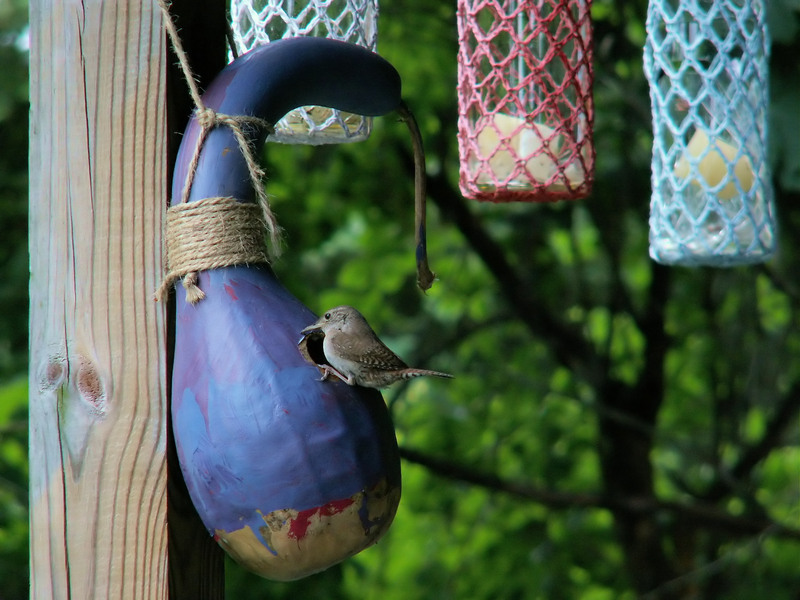Making Plant Pot Disposal an Easy Task: A Complete Guide
Are your gardening shelves overflowing with old pots? If you've ever repotted, propagated, or started new plants, you likely have an ever-mounting stack of empty or damaged plant containers. Making plant pot disposal an easy task doesn't have to be frustrating or wasteful. In this comprehensive guide, we'll show you how to declutter your garden area responsibly, recognize recyclable materials, and give plant pots a new life. Read on for expert advice on eco-friendly, hassle-free, and sustainable plant pot disposal!
Why Responsible Plant Pot Disposal Matters
The environmental impact of improperly discarding plant pots is more significant than many realize. Most garden centers and plant shops use plastic containers, which contribute to landfill waste and pollution if not handled correctly. By making plant pot disposal an easy task for yourself, you also help promote a cleaner, greener planet.
- Plastic accounts for a significant percentage of horticultural waste. It doesn't biodegrade quickly and can leach harmful chemicals if left to break down in landfills.
- Clay and ceramic pots can also end up in landfills. While more natural, improper disposal can create clutter and environmental hazards.
- Certain pots can be reused, recycled, or even upcycled -- reducing your carbon footprint and saving money.
Before tossing those old containers, let's explore easy and efficient methods for their disposal and repurposing.

Types of Plant Pots and Their Challenges
Making plant pot disposal an easy task starts with understanding what kinds of pots you have. This knowledge will help you determine the most eco-friendly and convenient disposal strategy.
1. Plastic Plant Pots
Plastic pots are the most common -- and problematic -- plant containers. They come in various styles: thin-walled nursery pots, rigid decorative planters, and trays for seedlings. The variety of plastics complicates recycling; some are more widely accepted than others.
- Polypropylene (#5) and High-Density Polyethylene (#2): These are the most widely recycled plastics.
- Polystyrene or Unmarked Plastics: Rarely accepted in municipal recycling, often destined for landfills unless taken to specialized centers.
2. Terracotta, Clay, and Ceramic Pots
All-natural and long-lasting, these pots sometimes crack, chip, or simply become surplus. While they don't harm the environment like plastic, their disposal can still pose challenges.
- Ceramic pots: Glazed varieties especially may contain chemicals or heavy metals, which complicate recycling.
- Terracotta: Unfinished clay pots can be broken and used as drainage material -- more on this below!
3. Biodegradable and Compostable Pots
These eco-friendly containers -- made from materials like peat, coir, or fiber -- are designed to break down naturally. Disposal, in this case, may be as simple as placing them in your compost bin.
4. Metal and Wooden Plant Pots
Recyclability of metal plant containers depends on your local collection scheme. Wooden pots, if untreated or naturally weathered, can be composted or repurposed.
Easy Steps for Disposing of Old Plant Pots
Ready to make plant pot disposal easy? Follow these practical steps to clear your garden clutter:
1. Sort and Clean Your Plant Pots
- Remove all soil, roots, labels, and decorative stickers from pots.
- Wash plastic, clay, and ceramic pots with water and mild detergent to clear residues that can interfere with recycling or reuse.
- Let pots dry thoroughly before further handling.
Sorting your plant containers by type and material simplifies their next destination, whether it's donation, recycling, or upcycling.
2. Check Local Recycling Guidelines
- Not all recycling centers accept plant pots. Check with your local authorities or waste management provider.
- Look for the recycling code on the bottom of plastic pots. Numbers 2 and 5 are most likely to be accepted.
- Don't mix different materials. Group similar plastics, ceramics, or metals together.
If your municipality doesn't accept certain pots, garden centers and plant nurseries often run take-back or recycling programs.
3. Donate Usable Plant Pots
- Community Gardens: Reach out to local allotments or community projects that always need extra supplies.
- Schools and Gardening Clubs: Youth programs frequently welcome donations of pots for classroom activities.
- Friends and Family: Offer surplus containers on social media or gardening forums. One gardener's trash is another's treasure!
4. Recycle Where Possible
- Bring sorted plastic pots to garden centers or curbside collection points that participate in pot recycling schemes.
- Take clean, metal containers to metal recycling stations.
- Break ceramic or terracotta pots into small pieces; some centers accept these for aggregate or fill material.
5. Upcycle and Repurpose Old Pots
Before throwing your pots away, consider creative ways to upcycle plant pots:
- Storage Solutions: Use large pots as storage bins for tools, hoses, or other garage items.
- Garden Art: Stack and paint old pots to make whimsical totems or statues.
- Broken Pot Planters: A cracked terracotta or ceramic pot makes a fantastic fairy garden, succulent arrangement, or drainage base.
- Seedling Starters: Even damaged pots serve as temporary homes for new plant cuttings.
6. Compost and Natural Decomposition
- Biodegradable pots (peat, coir, wood fiber) can go straight into compost or the ground.
- For untreated wooden pots, break them up and add to your compost bin or use them as mulch.
Special Tips for Sustainable Plant Pot Disposal
How to Make Plant Pot Disposal Easier Next Time
- Purchase pots made from recycled materials.
- Opt for biodegradable containers when starting seeds or small plants.
- Keep a designated area for storing reusable pots -- stack by size and shape to minimize clutter.
- Inquire about a pot return program when purchasing new plants at your local nursery.
Creative Ways to Repurpose Plant Pots
- Build a vertical garden using multiple small pots attached to a wooden fence or pallet.
- Create bird feeders or watering stations from cleaned and upcycled pots.
- Craft organizers for your indoor spaces -- turn pots into pen holders, brush caddies, or craft supply bins.
- Make luminaries by painting or drilling patterns into ceramic or plastic pots and adding LED candles.
Frequently Asked Questions on Easy Plant Pot Disposal
Are all plastic plant pots recyclable?
No. Only certain plastics, such as polypropylene (#5) and high-density polyethylene (#2), are widely accepted for recycling. Always check local guidelines and, if in doubt, bring pots to specialized garden center collection points.
How should I dispose of broken ceramic pots?
Large pieces can be used for drainage in new pots or as garden pathway material. Ceramics not accepted by recycling schemes can be broken up and used as aggregate or taken to facilities that process inert materials.
What do I do with biodegradable pots?
Compost them! If made from peat, coir, or biodegradable fiber, simply break them down and add to your garden compost or bury them in planting beds.
Can I sell or give away surplus plant pots?
Absolutely. Online marketplaces, local gardening groups, and community pages are great places to list excess pots for donation or sale. Many gardeners and DIY enthusiasts seek affordable or free containers.
Can I throw plant pots in my curbside recycling?
Not always. Some municipalities exclude plant pots due to contamination risks. Visit your local recycling center's website to see if they're permitted, and always clean them thoroughly before recycling.

Summary: Making Plant Pot Disposal an Easy, Eco-Friendly Habit
Making plant pot disposal easy isn't just about getting rid of excess containers. It's an opportunity to nurture a sustainable gardening routine, reduce waste, and foster a culture of sharing within your community.
- Sort, clean, and assess all old pots for possible reuse, donation, recycling, or upcycling.
- Follow local guidelines for recycling and composting to prevent unnecessary landfill waste.
- Get creative: From fairy gardens to tool storage, plant pots are more versatile than they seem!
- Encourage others to adopt eco-friendly disposal habits by leading by example and sharing resources for proper plant pot disposal.
The next time you find yourself surrounded by empty plant containers, recall these simple steps and make disposal an easy, responsible, and even fun part of your gardening hobby. By following these tips, you'll not only free up valuable space but contribute to a healthier, cleaner environment for everyone.
Resources for Plant Pot Recycling and Disposal
- Royal Horticultural Society: Plant Pot Disposal Program
- Garden Organic UK
- Recycle Now: Plant Pots & Trays Advice
- The Little Green Pot: Plant Pot Disposal Tips
Want to learn more about sustainable gardening? Stay tuned to this blog for regular updates and easy guides on eco-friendly garden practices!